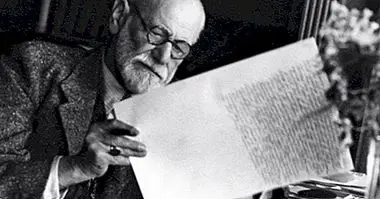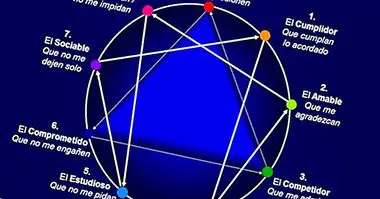The 5 big personality traits: sociability, responsibility, openness, kindness and neuroticism
In the study of personality psychology, the one known as Model of the Big Five (in English, "Big Five") it is a pattern in the study of the personality that examines the structure of the personality based on five broad elements or personality traits (personality dimensions).
Personality traits: the big five

These constituent elements were reported during a study on the descriptions made by individuals about the personality of others (Goldberg, 1993), and is one of the models on the most recognized human personality traits .
The five great personality traits, also called main factors , usually receive the following names: O factor (openness to new experiences), factor C (responsibility), factor E (extroversion), factor A (kindness) and factor N (neuroticism or emotional instability), thus forming the acronym "OCEAN ”.
Each of the traits is made up of a set of more specific personality traits. For example, the E (extroversion) factor includes specific qualities such as the search for emotions, sociability or optimism .
The model of the five big ones that he developed Raymond Cattell (in the photograph), it tries to describe the personality, and the professionals of the psychology have been contributing new evidences and approaches through the different different methodologies to analyze these personality traits of each individual.
The 5 personality factors
There is a certain agreement among personality experts in affirming that the personality can be categorized in these 5 big traits that were described in the theory of Big Five personality traits.
The definition of each of them is the following:
(Factor O): Opening to Experience
It shows to what degree a subject He tends to seek new personal experiences and conceives his future in a creative way . The person open to experience has a fluid relationship with his imagination, appreciates art and aesthetics, and is consistent with his emotions and those of those around him. They prefer to break with the routine and usually have knowledge about broad topics due to their intellectual curiosity. Its opposite is the Cerrazón to the Experience (or Change).
Individuals who score low have more conventional interests. They enjoy the simple rather than the complex, ambivalent and subtle. They tend to observe science or art as impractical disciplines. They prefer familiarity to the novel; They are moderate and attached to tradition.
(Factor C): Responsibility
It refers to how focused the subject is in its objectives , in addition to how disciplined it is shown to achieve these ends. We could say that the person with a high score in factor C is an organized individual, with a capacity for concentration, who completes his tasks and thinks before making a decision.
(Factor E): Extraversion
Defines the degree to which the subject he is open with others and channels his energy in social contexts . In other words, factor E examines how much a subject likes to be surrounded by other people, how much they like to express themselves in front of others, etc. Its opposite is the Introversion, which is characterized by reserved people, who are often labeled as unfriendly. They tend to be certainly independent, prefer the routine and family environment.
They prefer to be alone and do not like to be part of people's bustle, which does not mean they are less happy. Often they are as animated as the one in close friendship circles. They are more reflective than extroverts, and tend less to action.
(Factor A): Kindness
Is the degree to which the person is respectful, tolerant and calm . The kind person is one who trusts the honesty of other individuals, has a vocation to help and assist those who need it, is humble and simple, and is empathetic towards the emotions and feelings of others.
(Factor N): Emotional stability
Define to what degree a person faces without problems the complicated situations of life . Calm subjects, not very inclined to feel angry or angry, usually remain animated and manage their personal crises very well.
Within the personality traits, the N Factor is the one that we find with high score in the moderate and calm people.
Bibliographic references:
- Cattell, R.B., (1947). Confirmation and clarification of primary personality factors. Psychometrika, 12, 197-220.



















